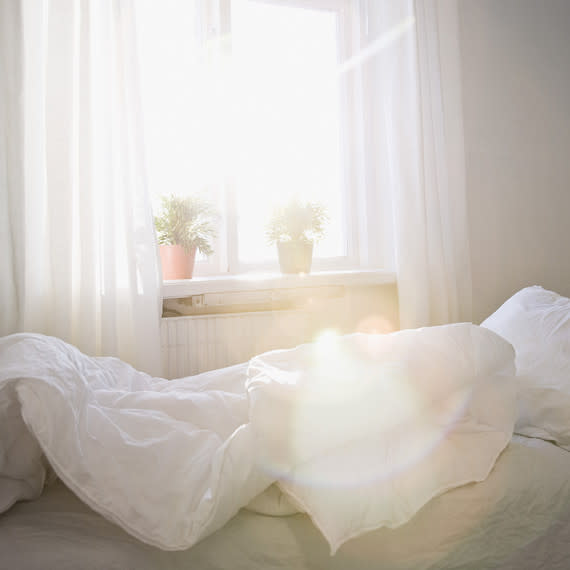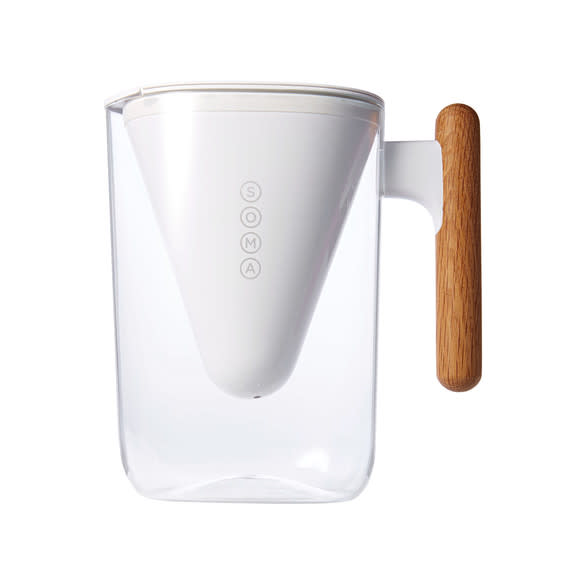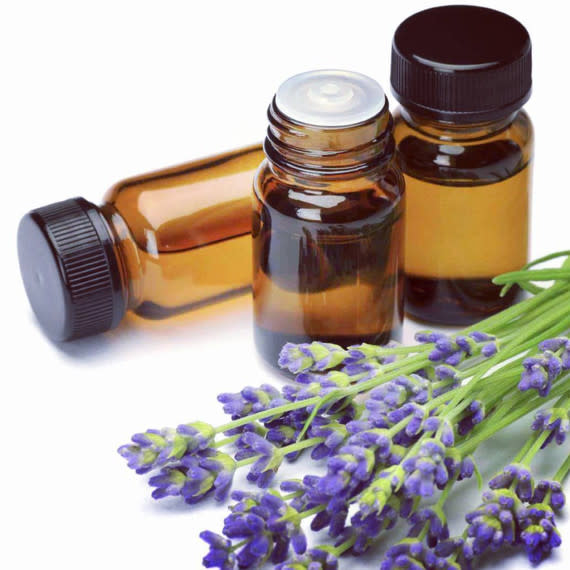6 Ways to Detox Your Home

A green juice detox isn’t the only way to give your body a fresh start this year.
“This may be shocking, but many of the items we use daily are not good for our health,” wellness expert Christine Dimmick tell us.
According to the Environmental Working Group, many everyday cleaners, beauty products, and home goods such as cookware often hide harmful chemical ingredients. These pesky additives have been linked to various health hazards including asthma, reproductive complications, organ damage, and cancer. Even scarier? Thousands of these chemicals—like phthalates which have been found to damage hormone systems—are still not being fully tested or regulated for their potential health risks.
The solution? Consider a home detox. And while while it may be impossible to go completely chemical-free (at least overnight), there are a few changes you can start today that can make huge strides towards a healthier home and a happier you.

Banish Harsh Cleaners
From wipes and sprays to solutions and detergents, household cleaners are one of the biggest chemical culprits of hidden toxins in your home. In fact, the NRDC cites that the average American uses 25 gallons of toxic chemical products around the home every year.
When it comes to cleaning, keep it simple and stick with ingredients you know. “The least toxic way to clean at home for yourself and the planet is using baking soda, white vinegar, water, and castile soap (like
),” says Dimmick, who recently published “
” and is the founder of natural home cleaning line, The Good Home Co. Castile soap, made from vegetable oils and naturally antibacterial, is also completely biodegradable.
RELATED: Try These 10 DIY Household Cleaners
Choose Greener Options
If you are buying, the Natural Resource Defense Council suggests looking for brands that do not contain phosphates, chlorine, or additional artificial fragrances. For scented options, choose products that source from essential oils instead. You can also seek out the EPA’s “Safer Choice” seal on products that have been evaluated for their effects on human health and the environment.
And before you toss out any old cleaners, be sure to visit your city’s sanitation department website to find out how and where to properly dispose of hazardous household waste. You should never pour these products down the drain as this can contaminate water supplies.
RELATED: These 6 Eco-Friendly Cleaners Are Our Go-To For Making Your Home Sparkle

Aim for Cleaner Air
“The air quality in our homes is actually quite bad and most people do not realize it’s where we get the most toxins,” says Dimmick. “The air pollution comes from products like furniture, dust, and VOCs from scented air fresheners.” These VOCs (or volatile organic compounds) are not only commonly found in many scented sprays from disinfectants to room fragrances, but also often lurk in paints, carpeting, and flooring.
Ideally, nixing the source of pollutants will be your most effective solution to clearer air, but a good first step is increasing ventilation, whether it’s cracking open a window or using an exhaust fan when cleaning, according to the Environmental Protection Agency. Investing in a portable air purifier and ensuring your HVAC filters are changed regularly can also help.
Addicted to the aroma of a good scented candle? Look for brands that are phthalate-free or, even better, opt for non-toxic alternatives like naturally-scented beeswax. Accenting your space with the right plants can also help you breathe cleaner. Lastly, don't underestimate the power of taking your shoes off at the door; this not only keeps dirt and dust at bay but also reduces the amount of allergens and irritants floating about in your space.

Test and Filter Your Water
While the EPA is responsible for ensuring the public’s water supplies remain protected and safe to use, contaminants from pollution, and even lead from plumbing in older homes, can sneak into your tap.
The first step to cleaner water: get it tested. “Water testing is something we all should do at least once a year, ideally every quarter if you have the financial means,” says Dimmick. While the cost of a thorough test can range from $300 to $1200, there are also cheaper tests available for specifically testing lead, heavy metals, and pH levels which Dimmick recommends at least having on hand.
RELATED: Drink Cleaner With Our Favorite Water Filters
A key contaminant to test for? PFAs, or per- and polyfluoroalkyl substances. This group of man-made chemicals are often found in water-proof products, from camping equipment to wax-lined paper coffee cups. “When purchasing a water filter or purifier, it is important to make sure they have independent testing and certification for the removal of these toxins.”

Start Reading Ingredient Labels
What you put in your body isn’t the only thing that matters; what goes on your body can impact your health, too. And because the Food and Drug Administration is not required to approve skincare products or cosmetic ingredients before these items hit store shelves, Dimmick says it’s important to stay educated on what harmful ingredients may be hiding in your favorite facial cleanser. But this isn’t always easy.
“It is impossible to truly understand all of the ingredients unless you are a chemist or someone like myself who has spent years researching and working in the business,” says Dimmick. “Many natural ingredients also have to be listed by their INCI (International Nomenclature of Cosmetic Ingredients) name.” This can often leave a perfectly safe ingredient sounding scary and dangerous—or the other way around.
RELATED: What to Know Before Switching to Natural Deodorant
One big step you can take towards smarter shopping: familiarize yourself with common ingredients that may be harmful to your health, like parabens (a preservative) and triclosan (an antibacterial agent) and know in what products they are often found in.

Stick to Essential Oils
Whether you’re detoxing your cleaning routine or paring down your body care products, swapping in essential oils wherever you can is a simple way to avoid harmful chemicals—especially when it comes to fragrances. Did you know that when you see the term “fragrance” listed on a product, it may be hiding over 3,000 other ingredients that manufacturers are not currently required to disclose? Yikes.
“Essential oils are a great way to kill germs naturally without using harmful man-made antibacterial soaps and ingredients,” says Dimmick, whose personal favorites include rosemary, clove, thyme, lavender, and tea tree oils. To keep her home both germ-free (and smelling fresh), especially during flu season, Dimmick diffuses the oils as well as adding them to a homemade vinegar-based cleaner.
RELATED: Everything You Need to Know About Essential Oils
Keep in mind, however, that even essential oils should be used in moderation. “They are very potent and very concentrated and just because they are natural, does not mean they cannot cause harm,” warns Dimmick. “Always dilute them and never apply directly to skin.” When creating your own homemade products and cleaners, you should use no more than 10 drops per 1/4 cup of solution.

